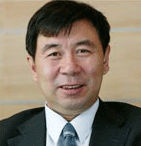

What has been the role of CNITA in promoting the non-woven and industrial textiles industry of China?
Since its existence, CNITA has been playing crucial role as an important organ of the Chinese Government. It has brought in reforms particularly in science & technology innovation, projects advancing, awarding, information issuing, standards building and international exchange of technical know-how.
On the last point however, CNITA believes at developing cooperation on international front. CNITA expects to build more opportunities to communicate and cooperate with the people from industrial textiles sector.
CNITA is always proactive;We have learnt that China's output of non-woven industry enjoyed annual growth rate of 12 percent over the past five years. How is the industry shaping up, so far?
Main market of China's nonwovens industry is still within its domestic terrain. Exports in this sector is marginal, just about 10 percent. However, the high speed of China's economic development provides a large space for non-woven industry.
Can you explain the breakup of various non-woven sectors of China in terms of Spun Bonding, Spunlace, Melt Blowing, Needle Punching, Thermal Bonding, Chemical Bonding and Airlaid Pulp?
Production of China Nonwoven Textiles in 2006 reached 1,396,600 tons, recording a 18.66 percent rise above 1,177,000 tons achieved in 2005. The sector wise output in 2006 can be read as below;
| Nonwoven Item | Total Production | Spunbond | Hydro- entangled | Meltblown | Needle punch |
| 2006(ton) | 1,396,600 | 533,100 | 87,900 | 21,600 | 343,000 |
| 2005(ton) | 1,177,000 | 429,500 | 75,000 | 19,100 | 275,000 |
| Increasing Ratio of 2006 Vs.2005 % | 18.66 | 24.12 | 17.20 | 13.09 | 24.73 |
| Percent in Nonwoven % | 100 | 38.2 | 6.3 | 1.5 | 24.6 |
| Nonwoven Item | Total Production | Chemical bond | Thermal bond | Air laid | Wet |
| 2006(ton) | 1,396,600 | 185,000 | 149,000 | 62,000 | 15,000 |
| 2005(ton) | 1,177,000 | 169,400 | 146,400 | 50,100 | 13,000 |
| Increasing Ratio of 2006 Vs.2005 % | 18.66 | 9.21 | 1.78 | 23.75 | 15.38 |
| Percent in Nonwoven % | 100 | 13.2 | 10.7 | 4.4 | 1.1 |
Why are China made nonwovens less expensive?
Nonwovens made in China are comparatively low in cost than others because of easy access and adequate availability of raw materials, necessary equipment and other related factors.
With further growth in technology and application of high performance materials in the offing, the price of products made in China will obviously increase. Therefore, low cost output in both these perspectives would no longer be synonymous with product from China, in the future.
Is there any provision for antidumping duty on imported technical textile products to protect and encourage domestic markets?
The requirement of technical textile is increasing quickly in domestic market, so some international companies are also interested, and are paying more attention in this market.
CNITA and some related national departments of China also pay attention to products' rendition that might be harmful to our market and enterprises. Moreover, we work within the ambit of international rules and regulations to ensure that there is no deviation from our aim to develop and promote the industry in China.
What is the level of indigenous and foreign technology absorbed by your industries today?
China relies on import for the high performance raw fiber materials. When compared technologically with equivalent products from overseas, yet more can be achieved in terms of performance, control and quality.
What future goals have been set up by the Chinese Government for textiles, particularly for technical textiles?
Chinese Government is working on the development based on scientific, sustainable, environment friendly, energy saving technology that lowers consumption and causes negligible pollution. Our Government is broadly committed towards improving and increasing product performance and generating value adds within the next two decades.
DISCLAIMER: All views and opinions expressed in this column are solely of the interviewee, and they do not reflect in any way the opinion of Fibre2Fashion.com.